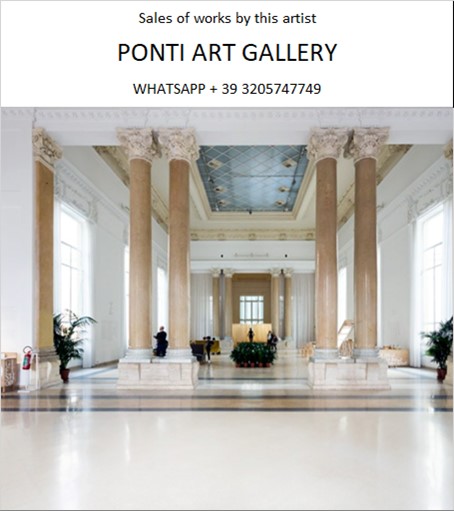Ponti Art Gallery is interested in buying and selling works
of art by this artist.

A.R. Nagori Biography
Abdul Rahim Nagori, commonly known as A.R. Nagori, was a pioneering Pakistani painter, celebrated for his bold socio-political themes and his role as an educator. Born in 1939 in Junagarh, in pre-partitioned India, Nagori's life and work were deeply intertwined with the political and social upheavals of his time. His art was not just a reflection of his personal aesthetics but also a profound commentary on the society he lived in.
Nagori's early life in Junagarh was marked by the cultural richness of a society on the cusp of monumental change. The partition of India in 1947 was a defining moment that influenced his later work. He pursued his passion for art by studying Fine Arts at the University of the Punjab in Lahore during the early 1960s. It was here that he encountered and was influenced by other iconic artists and intellectuals such as Colin David, Shakir Ali, Shemza, Murtaza Bashir, Safdar Mir, Sufi Tabbassum, and Faiz Ahmed Faiz. These interactions helped shape his intellectual and philosophical outlook, instilling in him a spirit of activism that would become a hallmark of his career.
After completing his studies, Nagori returned to Sindh, where he founded the Fine Arts Department at the University of Sindh in Jamshoro, serving as its head until 1995. His tenure at the university was not just about teaching art; it was about nurturing a new generation of artists who could think critically and engage with their socio-political environment.
Nagori's work was characterized by its fearless confrontation of controversial and sensitive issues. He was known for his vibrant use of color and symbolic imagery to address topics such as martial law, dictatorship, repression of women, brutality, and minority rights. His art was a form of protest, a means to challenge the status quo and inspire change. He was the first artist in Pakistan after independence to face bans and difficulties as a political artist, a testament to the provocative nature of his work.
Throughout his career, Nagori held numerous one-man exhibitions, starting in 1958. His exhibitions were often more than just art shows; they were political statements that drew attention to the injustices he saw around him. Notable exhibitions include the Anti-Militarism and Violence exhibition in 1982, which was censored and banned by the martial law regime, and the Anti-Dictatorship Exhibition in 1986, which exposed various national tragedies and shook the conscience of the nation.
Nagori's innovative use of symbols was a distinctive feature of his art. He personalized symbols to communicate politically charged ideas, giving them new meanings that were relevant to the socio-political events of the time. For instance, he used the Ralli pattern, a traditional patchwork from interior Sindh, to represent the stitched-together lives of oppressed women, and the thirsty crow to symbolize the plight of Thari women. His work was a powerful form of communication that transcended cultural barriers and spoke directly to the issues at hand.
In recognition of his lifetime services to art, Nagori received the Pride of Performance award posthumously, which was collected by his son. This award highlighted the impact of his work and his unwavering commitment to using art as a vehicle for social commentary and change.
Nagori's legacy is not just in the paintings he left behind but also in the countless students he inspired and the conversations he started through his art. His work continues to be relevant, serving as a reminder of the power of art to reflect society and to act as a catalyst for change. Nagori passed away on January 14, 2011, but his vision and the issues he addressed remain as pertinent today as they were during his lifetime. His art endures as a testament to his role as a free thinker, an outspoken activist, and a radical socio-political painter in Pakistan.
A.R. Nagori Quotes and Sales
of Works
Ponti Art Gallery selects and deals with paintings by the
artist. Upon request, we provide free estimates and
evaluations, communicate prices, quotations, and current
market values.
If you are interested in BUYING or SELLING works by the
artist, contact us immediately.
If you wish to sell or receive an evaluation of the
works:
Send us a frontal photo of the painting, one of the back,
and one of the signature. Also, indicate the dimensions of
the work. Inform us about the purchase origin of the work
and any kind of available documentation (purchase
receipts, certificates of authenticity, publications). One
of our operators will respond to you on the same day. We
guarantee maximum confidentiality and extreme
professionalism.
If you wish to purchase works by the painter: Contact us
and let us know your request. We will inform you about the
available works. We also offer the possibility to
subscribe to our NEWSLETTER, through which you will be
informed at the beginning of each month about the latest
acquisitions of the art gallery.
You can send us pictures of the work:
